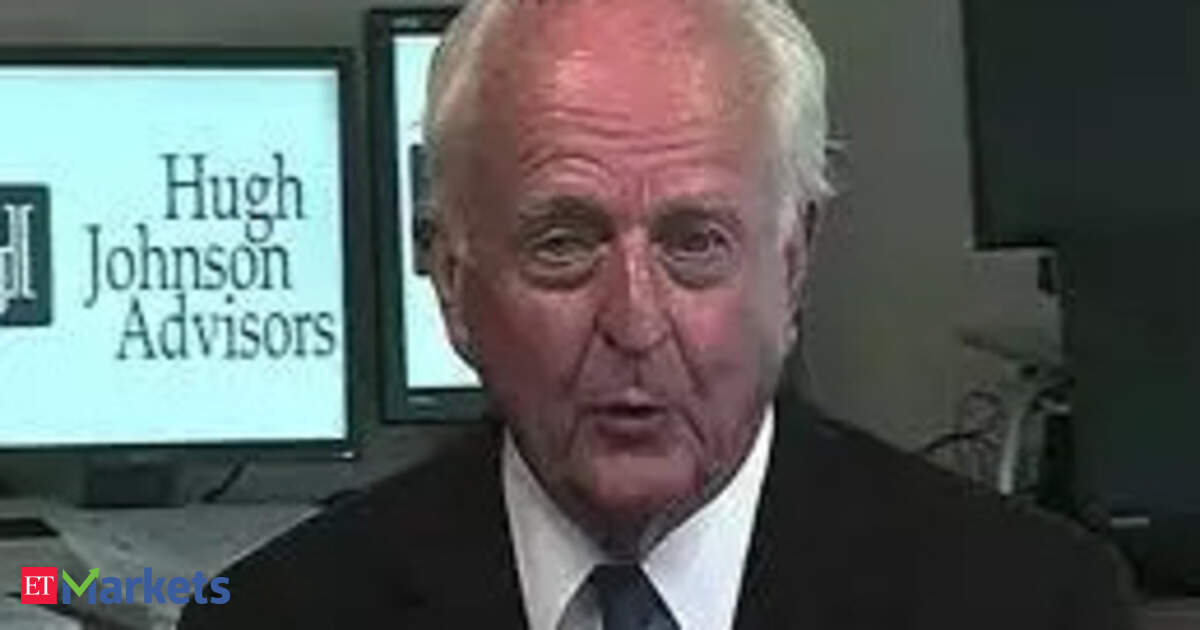Every day we have some or the other announcement. Today again Donald Trump has proposed 35% tariffs on Canada. Given the macro challenges that you are facing and the outlook for interest rate environment for the next few months, how do you view the macroeconomic landscape and what impact will this have on the American market?
Hugh Johnson: Well, you can obviously see that it is extraordinarily volatile and unpredictable. I mean, one thing that is a characteristic of what we are seeing today is the same thing that we saw in 2018 and 2019 during the first Trump administration or the first Trump trade war and that is an on again, off again sort of phenomena where you have tariffs that are levied one day and the next day they are reversed in response to a decline in the market.
I would really come down to the bottom line that is this going to be an extremely volatile and let us call it a volatile and trendless market. There will be good days and there will be bad days, but I do not think that you can say this is the start of a new bull market and I do not think at the same time that this is the start or we are in line for a bear market. Trendless and volatile is probably what you are going to see for the next month or two in response to an extremely volatile public policy from the US or from the Trump administration.I wanted to ask you about the tariffs that have been proposed for Brazil and also on copper imports that 50% tariff that has been announced by Trump. So, how do you expect that to affect global supply chains especially in manufacturing and commodity segments?
Hugh Johnson: This is starting to shape up or to sort of mirror what happened in 2018 and 19.Of course, we are starting next week when we start to get in US inflation numbers for the month of June, you will start to see the impact of tariffs, the increase in prices start to creep into the numbers.
You will see that in, for example, the consumer price index, which will be released next week, should show 0.3% increase, 0.3 does not mean much, but the year-over-year number is probably going to be a little bit unsettling and will again indicate some of the impact on tariffs.
The second thing that we are starting to see is we are starting to see an ongoing, but we are starting to see the decline or the contraction in US consumption. Consumer spending is not very-very good.
And when we look at the second quarter, although I will tell you the number for the second quarter looks like it will be okay, like 1.8%, when you compare it to the first quarter which was only 0.5%, it is still the case that consumer spending is slowing.
So, what I am really saying very-very succinctly is that we are starting to see or we are going to see numbers over the next couple of weeks which will show you the impact of tariffs and they are not going to be pretty numbers.
But if you track the oil market very-very closely, we have several developments that have come in over there as well. OPEC plus is expecting demand from China to slow down and China being the biggest importer of Brent crude that is likely to weigh heavy on Brent crude prices over the next few months. How do you view this setup especially in the landscape of tariffs and what kind of impact will that have on the oil market?
Hugh Johnson: If you talk about something that is unpredictable, the oil market is probably as unpredictable as anything. We are in a period, and when I say a period, two to five years where we are going to have declining oil prices, not significantly so, but that will be a reflection of economic conditions throughout the world.
We are going to see the shift quite frankly from oil to other non-oil commodities. There will be a lot of volatility around the numbers. So, I am talking about a $70 to $75, maybe a little bit less equilibrium price of oil with a lot of volatility around that number and of course, for the time being when we are starting to see a slowdown not only from China but a slowdown in the US.
The US economic growth is likely to become somewhere around the 1.3% or 1.4% number for 2025, that is down from a 2.8% number in 2024. So, the US is slowing, that will slow in the second quarter. It will slow in the third quarter. China will slow. The European Union will slow. Everything is a more or less in the process of slowing and quite frankly that will show up in the price of oil, but it will also show up in just general conditions.
Again, I go back to that first thing I said, which was a trendless in market, a trendless and volatile market environment, and I think that is really what you are, it is going to be very hard to make money and especially because our valuation right now in the US markets is a little bit high.
We are about 3.5% overvalued or over the level, I think we will reach in the fourth quarter of 2025. It is going to be very-very hard. In this kind of an economic environment and earnings environment. It is going to be very hard to make money in the equity markets. Be patient though. Every investor should understand that as was the case with all of these very difficult periods at least in my lifetime, all these difficult periods are followed by better periods or an emergence and with some patience in time you will just fine, you will make money in the equity markets but you got to be patient, you cannot jump the gun and if you go in now, you will be jumping the gun and it is going to make it more difficult for you.







